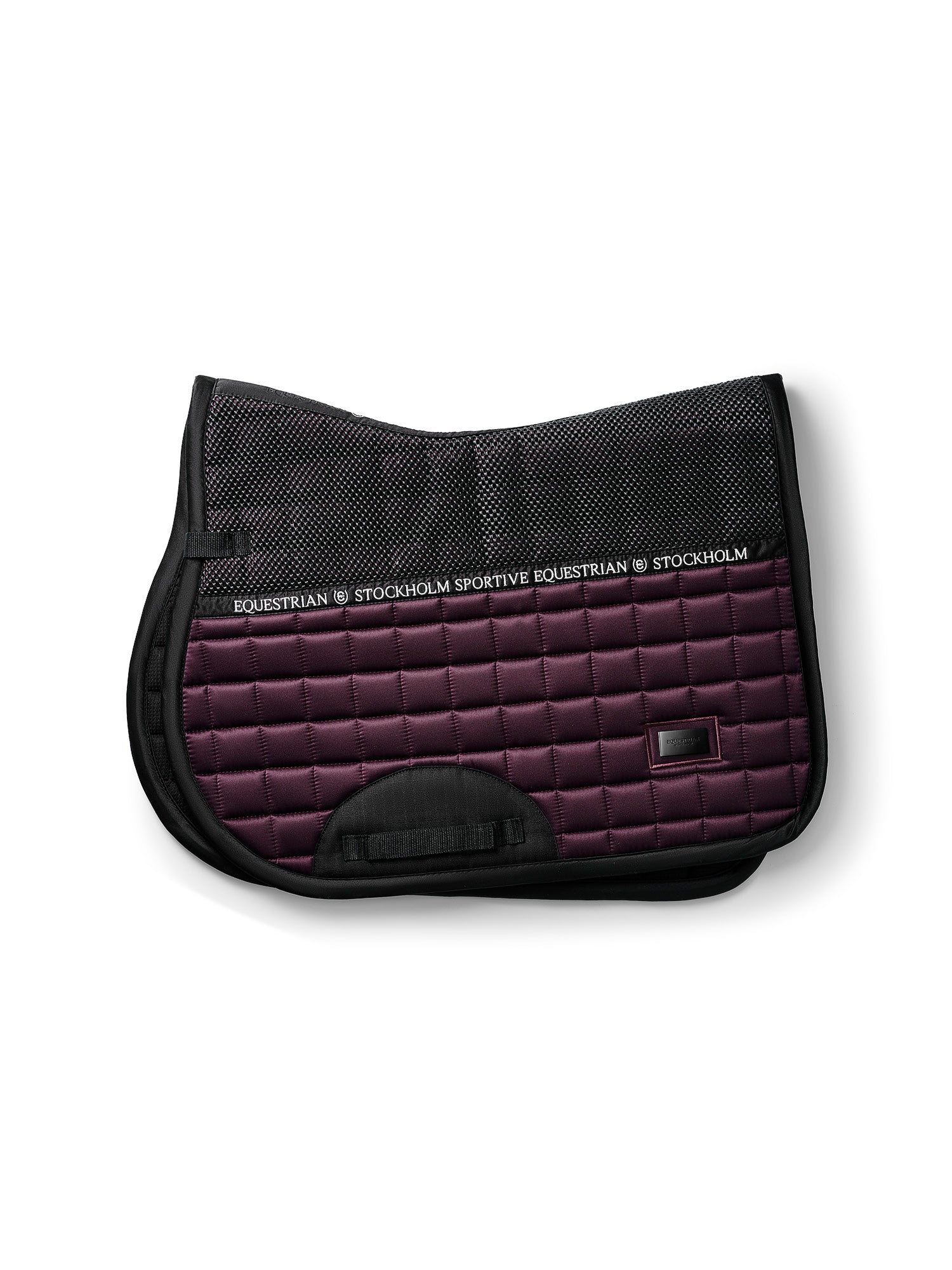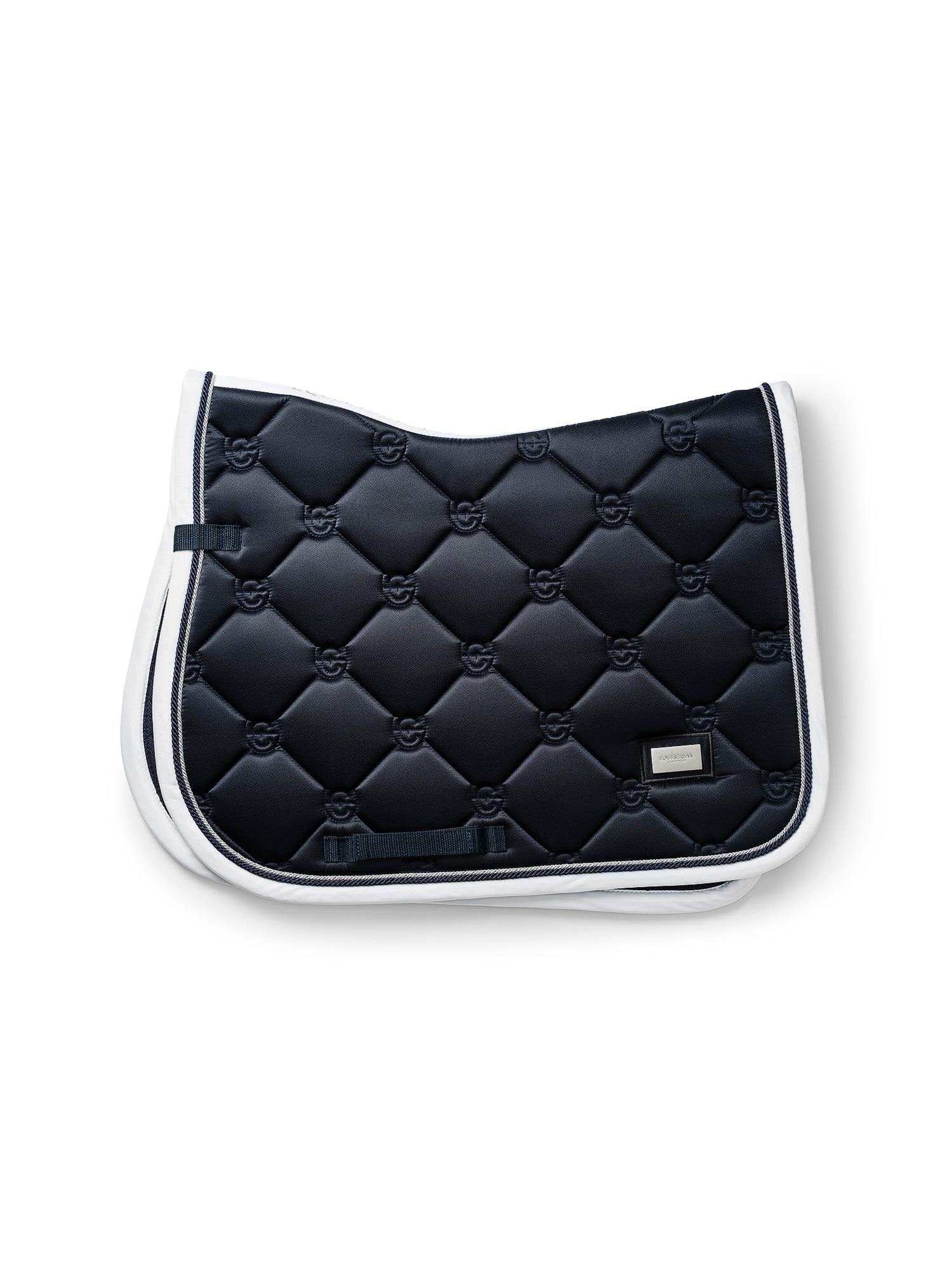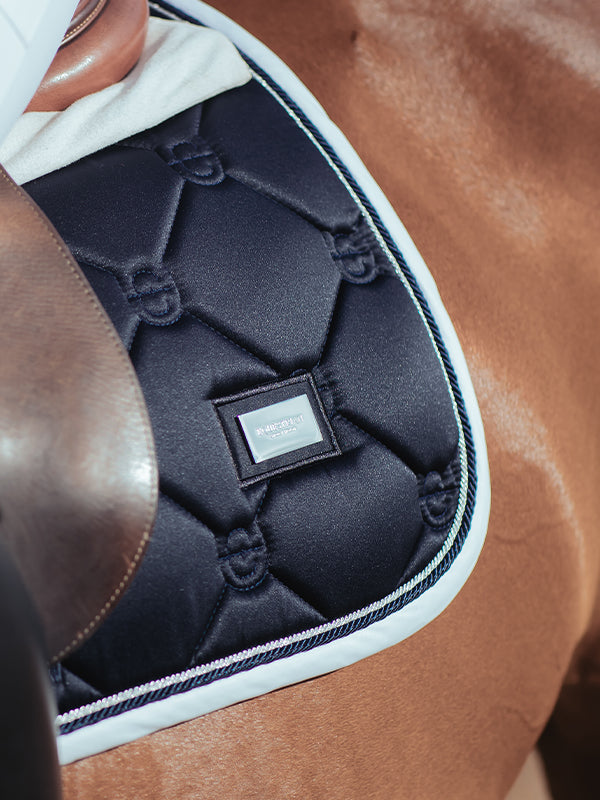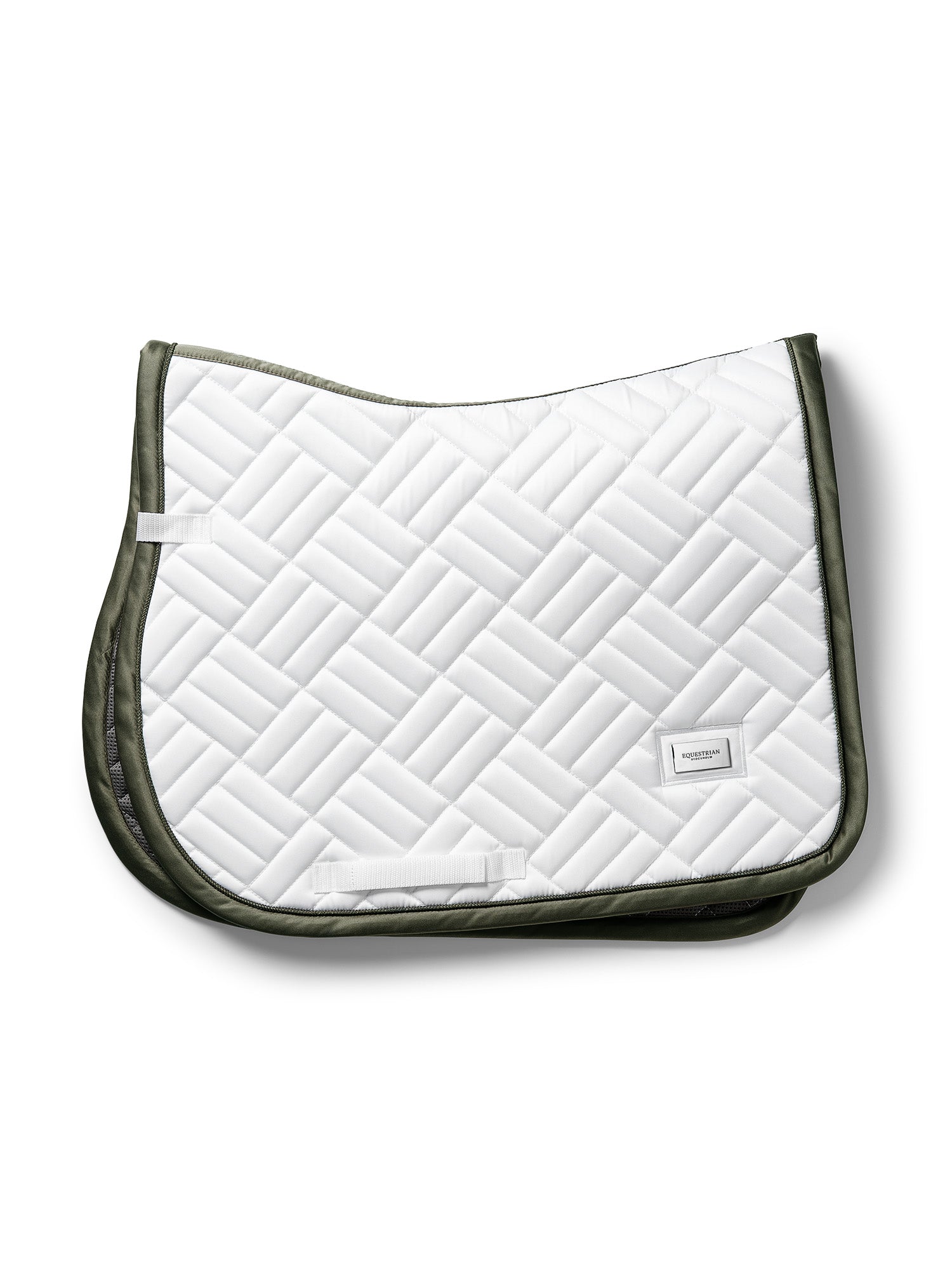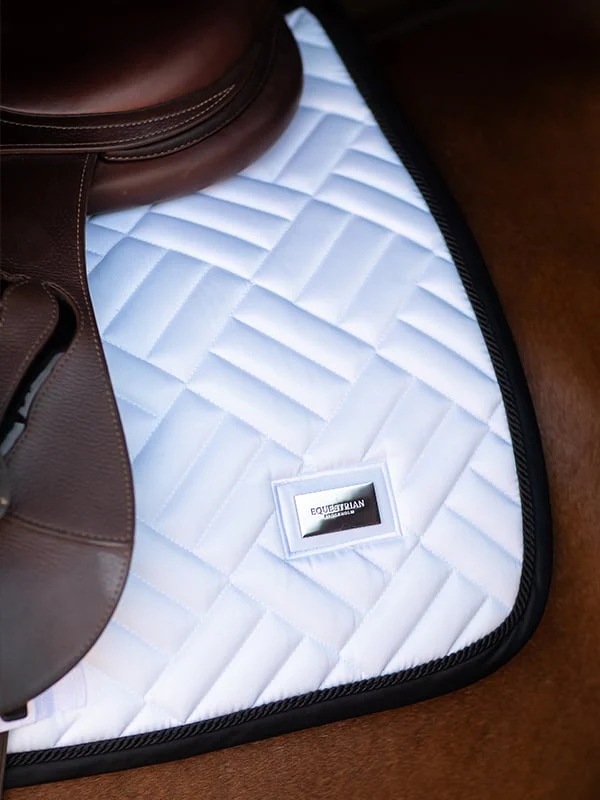When you start competing, it can feel like a jungle for beginners, but it’s also hard to keep track of all the rules as you reach the international levels of competition. There are many concepts, rules and approaches that are important to know. With this guide, we will do our best to address everything that is important to know so that you are fully ready next time it’s your turn to excel in the arena.
Moonless Night
FEI Championship Rules and Regulations
When competing in a FEI-championship, FEI has its own set of rules that apply to each competition. FEI is short for Féderation Equestre Internationale which translates roughly to “The International Equestrian Organization” and is the primary organization that sets the standards and rules for international competitions. A list of all the general rules regarding dressage, showjumping, and eventing competitions are easy to find on the official FEI-website, click here to view them.
Dressage
In dressage competitions, riders are judged on their ability to execute a series of predetermined movements with their horse. These movements, or "tests," are designed to showcase the horse's mobility, obedience, and athleticism, as well as the rider's skill and precision.
Blue Meadow
National and International Dressage Levels
There are several national competition levels that have different names depending on the country. Additionally, there are famous international dressage levels which are called Prix St. George, Intermediere I, Intermediere II, and last but not least the Grand Prix level. These represent the elite competitors of the dressage world.
Showjumping
The names of the levels are different in showjumping compared to dressage. When speaking about international FEI competitions, the levels are determined by the number of stars (*). The easiest way to conclude the different international levels in showjumping is that the international levels are named “CSI” and are often followed by a certain number of stars. The number of stars show the difficulty of the specific course, which can be determined by the height of the fences or how the course is built.
Blue Meadow
Regulations for Boots in Showjumping
In terms of tack and gear, the use of boots is allowed, but there are restrictions on the type and design of boots that can be used. Horse boots must be used for therapeutic or protective purposes only and they should not be used to enhance performance. Additionally, the use of weighted boots or boots that restrict the horse's movement are strictly prohibited.
The use of spurs is allowed, but they must be used in a humane and appropriate manner. The spurs should be short and blunt, and the rider should not use excessive force. If the spurs are deemed to be causing harm to the horse, the rider may be disqualified.
The use of whips is also allowed, but there are restrictions on the length and design of the whip. The whip should be no longer than 75cm (30 inches) in length and the end of the whip should be made of a material that does not cause injury to the horse. The whip should only be used to encourage the horse and should never be used as a form of punishment. Ear bonnets and saddle pads must be white, black, or navy blue with no visible logos with the exception of a small logo that can be near the girth area of the saddle pad. The ear bonnet should not have a visible logo and should be a single color without patterns or decorations. If the rider is wearing a national uniform, the colors on the ear bonnet and saddle pad should match the uniform. Any deviation from these rules may result in disqualification.

Eventing
The sport of eventing is a challenging and exciting discipline that involves three distinct phases: dressage, showjumping, and cross-country. Riders must navigate a series of obstacles in the show jumping and cross-country phases, showcasing their horse's athleticism, obedience, and training.
Eventing Rules for Safety and Equipment use
The rules governing eventing are designed to ensure the safety and welfare of the horse and rider, as well as the fairness of the competition. The horse’s tack and gear are subject to specific regulations, and riders must adhere to strict guidelines regarding the use of whips, spurs, and other equipment.
Eventing Phases: Dressage and Showjumping
Eventing competitions typically begin with the dressage phase, in which riders must perform a series of precise and controlled movements with their horse. The scores from the dressage phase are then combined with the scores from the showjumping phase, in which riders must navigate a series of obstacles within a set time limit.
The Cross-Country Phase and Eventing Levels
In addition to the dressage and showjumping phases, eventing competitions also include a third phase: cross-country. Cross-country involves navigating a course with a variety of obstacles, including water jumps, ditches, and solid fences. In eventing, the levels range from beginner levels, such as Introductory and Training, to more advanced levels, such as Intermediate and Advanced. Each level has specific requirements for the types of obstacles and challenges that riders and horses must navigate, as well as restrictions of the use of certain equipment. As riders progress through the levels, they must demonstrate increasing levels of skill and ability, culminating in the most challenging level of all, the four-star level. The four-star level is reserved for the world's top riders and horses and it represents the pinnacle of achievement in the sport of eventing.
We wish you the best of luck when it’s your turn in the show ring!
Love,
Team ES
Team Rider Carolina Villanueva
Summary
- FEI Championship Rules: The Fédération Equestre Internationale (FEI) sets the international standards and rules for dressage, showjumping, and eventing. Detailed rules can be found on the official FEI website.
- Dressage Competition: Riders are judged on their ability to perform predetermined movements with their horse. Levels range from Prix St. George to Grand Prix, with specific regulations on the size and placement of logos on gear.
- Showjumping Levels: International showjumping levels are denoted by the number of stars (e.g., CSI1*, CSI2*). Equipment regulations include restrictions on boots, spurs, and whips, ensuring humane use and adherence to competition standards.
- Eventing Phases: Eventing combines dressage, showjumping, and cross-country. Competitions have various levels, from beginner to four-star, with specific rules governing the obstacles and equipment used.
- Preparation and Success: Understanding and following these rules is crucial for success in international competitions. Proper adherence ensures fair competition and the well-being of both horse and rider.
Team Rider Therese Nilshagen
FAQ
1. What is FEI?
FEI is the governing body for international equestrian sports, setting rules for dressage, showjumping, and eventing.
2. What are the dressage competition levels?
International levels include Prix St. George, Intermediare I & II, and Grand Prix.
3. What are the equipment rules for showjumping?
Restrictions apply to boots, spurs, and whips, which must be used safely and humanely.
4. What phases make up eventing competitions?
Eventing includes dressage, showjumping, and cross-country.
5. How is showjumping categorized?
Showjumping levels are marked by a star system (CSI1*, CSI2*, etc.), indicating course difficulty.






